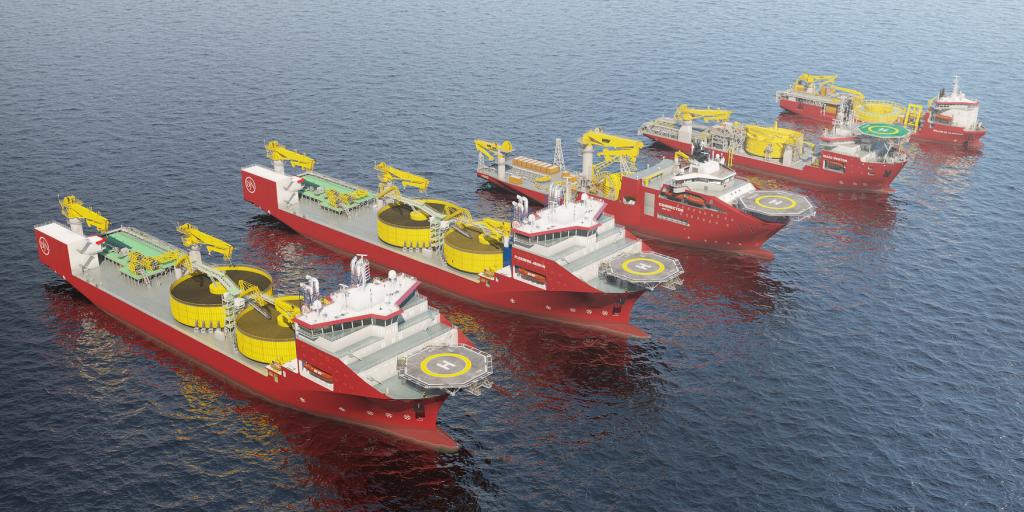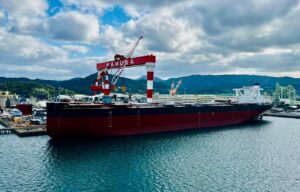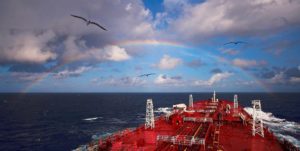
Connecting Ireland with Wales, Crete with mainland Greece, the Orkney islands with mainland Scotland: these are just some of the subsea connections on Jan De Nul Group’s record. These connections, via submarine cables, bring energy from offshore wind farms to land or to connect countries’ electricity grids.
To further support that transition, the Dutch-based subsea company Jan de Nul has ordered another XL cable-laying vessel, identical to the “Fleeming Jenkin”, which will be delivered in 2026 and has already been booked for its first projects.
Like the “Fleeming Jenkin” the vessel will be 215 metres long and can transport 28,000 tonnes of cables, and this will make them the largest capacity cable-laying vessels in the world, as the company informs.
Thanks to cutting-edge technology on both vessels, designed by its own specialists, they can lay cables in both shallow and ultra-deep waters up to 3,000 metres. The vessels can handle cable tensions of up to 150 tonnes.
Both vessels are equipped with Ultra-Low Emission vessel (ULEv) technology, an advanced dual exhaust filter system.
This system removes up to 99% of nanoparticles from emissions using a diesel particulate filter (DPF) and a selective catalytic reduction system (SCR) for NOx removal.
The ULEv system also significantly reduces exhaust gas pollutants, in accordance with Jan De Nul. Thanks to the ULEv system, the vessels comply with the strict European Stage V emission standards for inland waterway vessels. Moreover, the NOx emissions are reduced to such an extent that these vessels meet the even stricter EURO VI emission limits.
The hybrid power plant on board also contributes to the reduction of CO2 emissions and optimal fuel usage. It combines the generators with a 2.5 MWh battery and drive technology, designed for peak load shaving, load smoothening, spinning reserve and optimized engine loading. The vessels can be powered by biofuel and green methanol which significantly reduce CO2 emissions.
“These vessels bundle all the experience and expertise gained by Jan De Nul during the past decade of successful cable installation projects. Both the design, as well as all cable handling equipment has been developed and designed by Jan De Nul’s in-house specialists.
“At the time of ordering our cable-laying vessel Isaac Newton back in 2013, we changed the power cable installation market by introducing a vessel with higher carrying capacities than available on the market at that time.
“Yet, 10 years later we continue our pioneering entrepreneurship with the world’s most advanced cable-laying vessels, including an unrivalled carrying capacity of 28,000 tonnes, the capability to install up to four cables at once and installation equipment to lay power cables in ultra-deep waters of up to 3,000 metres,” said Wouter Vermeersch, Offshore Cables Department at Jan De Nul Group.
“We are and remain a big believer in the transition to renewable energy. With this second XL cable-laying vessel, we continue to reinforce our pioneering role. Both vessels combine all the cable installation expertise we have built up over the past decade. The result are vessels that operate very efficiently and have a much smaller carbon footprint,” noted Jan Van de Velde, director New Building, Jan De Nul Group.
Source: Jan de Nul.


